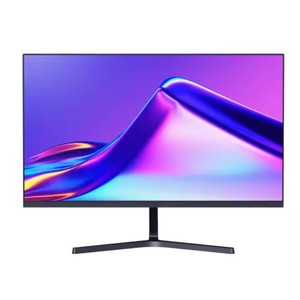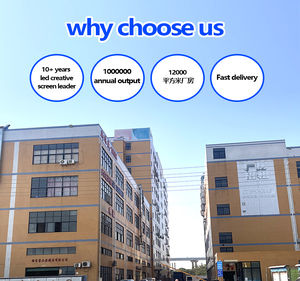(132554 products available)






































































































































































































































A computer sale is a transaction where computers are sold. Computers are available in various types, including laptops, desktops, and all-in-one PCs. They come in different forms and sizes, with specific features designed to meet different needs.
Personal computers (PCs) were introduced to the market in 1975. Since then, they have become the most common type of computer. A personal computer is versatile and can be found in homes, schools, and businesses. Personal computers have three common types: desktops, all-in-one PCs, and laptops. Desktops have a separate monitor, keyboard, and mouse. In contrast, all-in-one PCs have a keyboard, mouse, and monitor all in one. The components of a personal computer are made up of a central processing unit (CPU) that acts as the computer’s brain, a monitor to display the visual interface, a keyboard to type commands, and a mouse to navigate the screen. The CPU has random access memory (RAM) and storage memory. The computer's operating system and software programs are stored on the storage memory. Personal computers run on operating systems such as Windows, Mac OS, and Linux.
Notebooks, also known as laptops, are portable personal computers that can be carried from one place to another. They have a battery that allows them to work when not plugged in. Notebook computers have the same components as a PC, including a CPU, RAM, and storage memory. However, laptop computers have less powerful hardware than desktops. The parts are tightly packed inside the laptop's case, making it difficult to upgrade or repair them. The screen size of a notebook computer can range from 13 to 16 inches. Some notebook computers have a touch screen, while others do not. A laptop has a built-in keyboard and comes with a touchpad or pointing stick for the mouse. It requires an operating system to function, such as Windows, Mac OS, or Linux.
A workstation is a powerful computer designed for technical or scientific applications. These computers are used in engineering, scientific research, and other highly specialized fields. They are usually more expensive than other types of computers because they perform demanding tasks. Workstations usually have multiple processing cores, a large amount of RAM, and high-resolution display. They may also include a faster graphics card for rendering 3D models. Workstations are normally used for tasks like video editing, 3D modeling, and scientific simulation.
Computer sales have different functions and features. Functions are what a particular service or product does, while characteristics are distinct attributes or qualities of a product or service. The following are some functions and features of computer sales:
This is the process of overseeing and controlling a company's materials, goods, tools, and other assets required for the company's business. Inventory management involves identifying inventory requirements, setting target stock levels, reordering inventory, and analyzing item usage and trends.
Customer experience (CX) refers to the overall experience a customer has with a brand or business. It results from every interaction a customer has with the business, from navigating the website to talking to customer service to purchasing a product or service.
Data security is the practice of protecting digital data from unauthorized access, corruption, or theft throughout its lifecycle. Compliance refers to the adherence to laws, regulations, guidelines, and specifications relevant to a company's business operations.
This refers to the location of a computer system within an organization. It might be in a server room, a closet, under a desk, or even on the factory floor. On-premises systems are physically present on the company's premises and are usually managed and maintained by the company's IT staff.
Unlike traditional on-premise systems, cloud-based POS systems store their data on the internet or "in the cloud." Businesses access this system through the internet, and the service provider is responsible for the system's security and maintenance.
Remote management is the administration of a computer system or network from a remote location. It allows IT professionals to monitor and manage systems, resolve issues, and provide support to end-users without being physically present.
PCs are used for a variety of applications. They are commonly used in offices and businesses. Employees use them to create documents, send emails, and access databases. Office computers allow workers to work on spreadsheets, do presentations, and organize files. Computers are also used for accounting, human resources, and customer relationship management in businesses. Office computers are optimized for productivity tasks. They have word processing software, email apps, and web browsers.
Some people buy PCs to play video games. Gaming computers have powerful CPUs and graphics cards. They can run games at high settings without lagging. Gamers use gaming PCs to play online games with their friends. They also use them to stream gameplay to websites like Twitch. Gaming PCs have a lot of RAM so that gamers can open multiple programs at once. They also have a good cooling system to prevent overheating during long gaming sessions.
Students use computers to do research for their schoolwork. They also use them to write essays, make presentations, and take online classes. Schools have computer labs where students can use PCs to do homework or learn to code. College students might use a laptop to take notes during lectures or study in the library. Some schools give each student a laptop to use for their classes.
Photographers and videographers use PCs to edit their photos and videos. Editing programs like Adobe Premiere Pro and Photoshop run better on powerful computers. Professionals use PCs to edit movies, create music, and design 3D models. Workstation PCs are optimized for media production. They have powerful CPUs, lots of RAM, and fast storage drives.
Some people use PCs to watch TV shows, listen to music, and play games. They connect their PC to a large monitor or TV in the living room. Home theater PCs are small computers that can fit in an entertainment center. They have software that makes it easy to navigate menus with a remote control.
Millions of people use PCs to go on the internet. They use web browsers like Chrome, Safari, and Firefox to visit websites and use social media. People use PCs to shop online, read the news, and watch videos on YouTube. Web browsers let users open multiple tabs at once so they can switch between different sites.
Business buyers need to consider a few important things before buying computers in bulk. Here are some tips to help buyers make the right choice.
Buyers should know what the computers will be used for. Will they be used for office work, gaming, graphic design, or other purposes? Buyers should also consider how many computers are needed for their users and make sure the computers will work well together. Thinking about these things will help buyers choose the right computer specifications for their needs.
Buyers need to know how much they can spend on the computers. Setting a budget will help buyers focus on the options that are affordable. Buyers should consider not just the cost of the computers but also other expenses, like software, accessories, and maintenance.
Buyers should choose a computer design that fits their workspace. Desktops are good for traditional office setups, while all-in-ones are more compact. Laptops are portable and easy to move around, but they may not be as powerful as desktops. Buyers should also think about computer design features like screen size, resolution, and build quality.
Buyers should choose computers with enough power and storage for their tasks. If the computers will be used for basic office work or web browsing, a dual-core processor and 4 GB of RAM should be enough. For more demanding tasks, buyers should consider a faster processor and more RAM. Buyers should also look for computers with enough storage space for their programs and files. A 256 GB SSD is a good choice, but buyers may also need an external hard drive for extra space. Finally, the computer's operating system should be up to date and receive updates in the future.
Buyers should choose computers that are well made. Look for computers from trusted brands with good reviews. Also, check the warranty and support options in case anything goes wrong. Buyers should also make sure the computers will last a long time.
Q1. How to find the right computer for one's needs?
A1. It's important to consider required specifications based on usage patterns and do thorough market research to find the best match within a budget.
Q2. What are some important factors to consider before buying a computer?
A2. Some important factors to consider are CPU (Central Processing Unit), RAM, storage, display, and graphics card. These are essential for the computer to be able to cope with the workload.
Q3. What are the popular brands available in the market?
A3. Some popular brands are HP, Dell, and Lenovo for desktops and laptops. Others include Apple and Asus.
Q4. What are some typical computer specifications that are good for regular office work?
A4. For regular office work, an i5 or i7 processor with 8GB of RAM and 500GB SSD should be sufficient for the daily tasks.
Q5. How can one test a computer before buying it?
A5. Before purchasing a computer, one should test it by running a CPU stress test and a benchmark to ensure that it meets the required specifications and does not overheat or make too much noise. Also, check for any physical damages or defects at the time of testing.